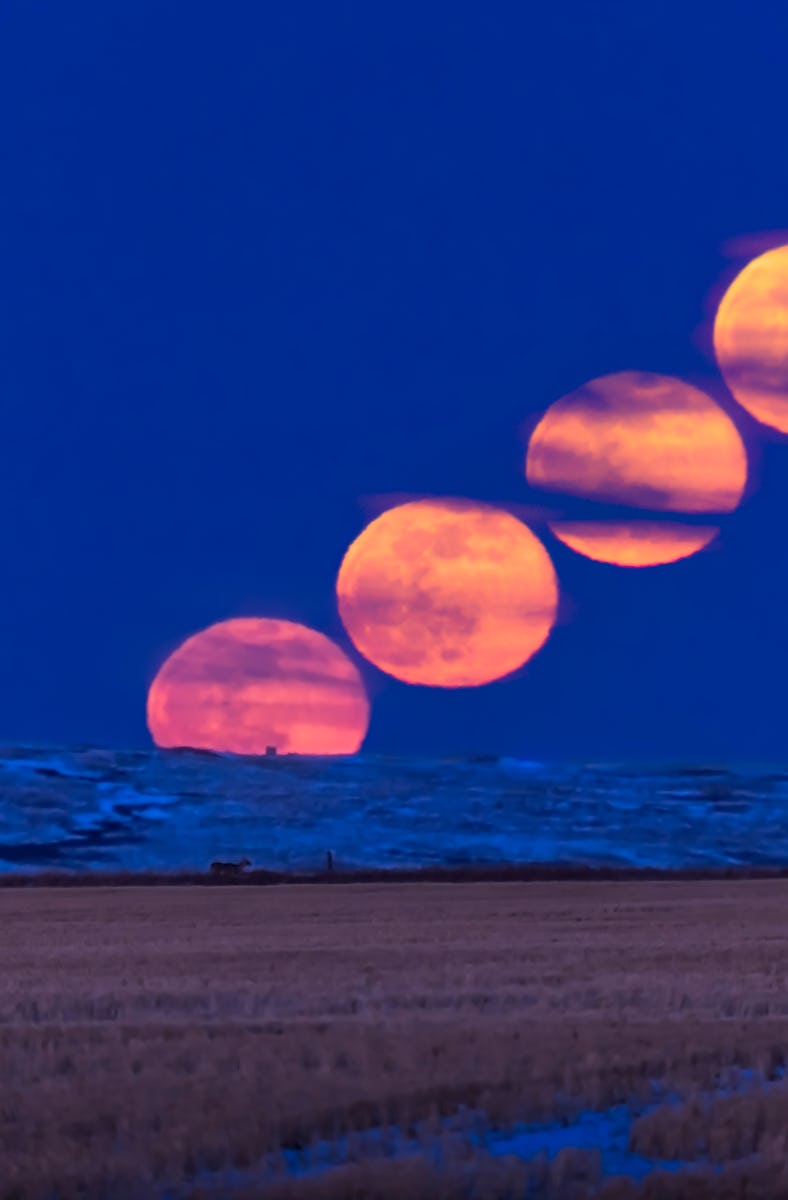The First Full Moon of Spring Will Appear this Weekend With A Hidden Surprise
Think of it as the opening act for the solar eclipse on April 8.

It’s time to go outside and look at the sky again!
The first full Moon of spring will rise on March 24, and it will come with a partial lunar eclipse. Here's how to enjoy this month's full Moon — and why it's called the Worm Moon (sorry; it’s not a Dune reference).

This image shows a time-lapse sequence of the rising Worm Moon in 2020.
The March 2024 Partial Lunar Eclipse
Viewers across most of the Americas should be able to see the full Moon briefly darkened by Earth’s shadow in the late-night hours of March 24. The Moon’s path around Earth will put our home planet at just slightly between the Moon and the Sun, so the very edge of Earth’s shadow falls across the Moon’s rocky surface. Because it’s just the very edge of Earth’s shadow falling on the Moon, the partial lunar eclipse will be a very slight dimming — nothing like the much more dramatic darkening of the whole Sun on April 8.
Look for the first traces of faint shadow on the Moon’s lower left edge around 2:30 AM Eastern Time; it should spread until it covers most of the Moon’s surface around 3:15 AM Eastern Time. From Earth, most of the Moon will just look slightly dimmer and grayer than usual, except for a sliver of bright white that’s beyond the reach of Earth’s shadow.
If you were standing on the Moon on the night of March 24, you would see something far more dramatic: a partial solar eclipse, with Earth’s shadow blocking about 90 percent of the Sun. Your lunar day would get noticeably dimmer for a few minutes (although nothing is comparable to the sudden darkness of a full solar eclipse.) And if you were standing on the Sun, looking out toward Earth and the Moon, you would be dead (what did you expect?).
How to see the 2024 Worm Moon
The full Moon will rise shortly after sunset on the night of March 24, and it will be at its fullest and brightest around 3 AM Eastern Time on the morning of March 25, just in time for the partial lunar eclipse. While you’re waiting for the big show, check out the rugged terrain of the Moon with a pair of binoculars or a telescope.
According to the Old Farmer’s Almanac, the Worm Moon didn’t get its nickname from the earthworms rising up in the newly thawed, muddy ground in early spring. Apparently, the name actually came from the Dakota people, who use it to describe not earthworms, but beetle larvae wiggling out from under the tree bark where they spend the winter.
Other Indigenous groups across North America call this month’s full Moon the Wind Strong Moon (Pueblo), the Goose Moon (Algonquin and Cree, in honor of rising maple sap), or the Sore Eyes Moon (Assiniboine, Dakota, and Lakota, because bright spring sunlight reflecting off the snow is painful to look at).
This year’s next full Moon is the cheerfully named Pink Moon, rising on April 23, 2024.